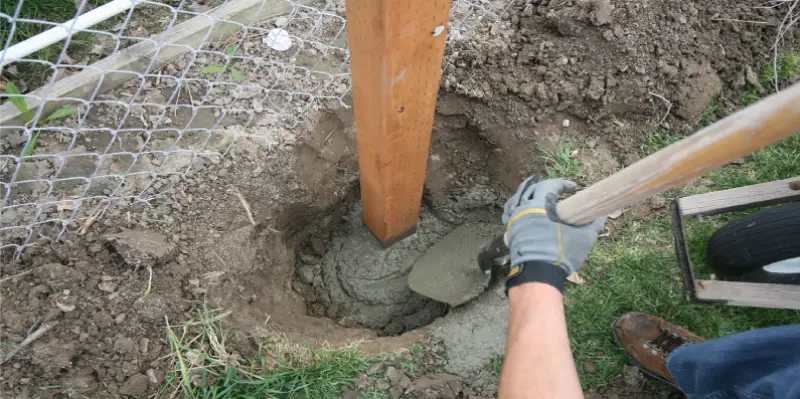How to Prevent Fence Posts from Rotting

Wood fence posts will rot due to prolonged exposure to moisture in the soil. This article will teach you how to prevent fence posts from rotting, which will save you time and money in the long run because once a fence post starts deteriorating, you have no other option but to get rid of it and sink a new post.
Choose Your Lumber Wisely
No matter which lumber you choose, make sure it’s been pressure-treated. This wood looks “green” and is sometimes called “Wolmanized®.” (This means it’s treated with chromated copper arsenate, a preservative.) If not pre-treated, the posts will be more susceptible to rotting.
Alternative options to pressure-treated lumber are:
- Western red cedar – naturally rot-resistant wood with a long lifespan.
- White cedar or black locust – prevents the growth of fungi (suitable for marshy environments).
- Cypress or redwood – naturally water-resistant.
Why Use Treated Wooden Posts
Softwood posts in the ground that are not treated may only last up to 6 months! Using treated posts will ensure longevity.
Some fence builders will wrap the base of the post in sheet copper or galvanized steel to prolong the wood's life even further, but the consensus is that treated posts will do the trick.
Can You Treat Wood Yourself?
For wood post projects, you should always buy lumber that has been pre-treated. Treating the wood yourself doesn’t always have the same results, since the preservative can’t penetrate the wood as far.
However, if you want to treat the post yourself, brush the bottom half with a wood preservative such as waterborne copper naphthenate following the manufacturer’s instructions. You should also use the same treatment technique for any treated lumber that is cut with a saw and that leaves an untreated section exposed to the elements.
Farmers and old-timers swear by the “charring” method of wood preservation. This technique is only safe for untreated lumber since it lightly burns the wood. Use a torch or a campfire to “char” the part of the wood that will be buried or in contact with the ground. As always, take precautions when burning wood and keep water nearby to extinguish any flames.
Set in Gravel and Concrete
Once the posts are treated, it’s time to set them in the ground. You’ll want to dig a hole about twice the diameter of the fence post and as deep as your frost line – which can be as shallow as 16 inches to as deep as 42 inches – check with local building codes for this depth. Fill the first three inches up with gravel so the end of the post doesn’t come into contact with the dirt. Gravel allows water to drain quickly away from the post and into the soil.
Be sure to place the post in the center of the hole.
Finally, fill the entire hole up with cement to the top. Concrete will hold the fence firmly in place and prevent any lateral movement. For even more protection, dome the top of the concrete so it slopes away from the post to divert water away from the post.
Professional Fence Installation Services
If you’d like a fence that won’t rot, give Mr. Handyman a call or request service online. We will make sure your fence is constructed securely and built to last.
 Click to call
Click to call


